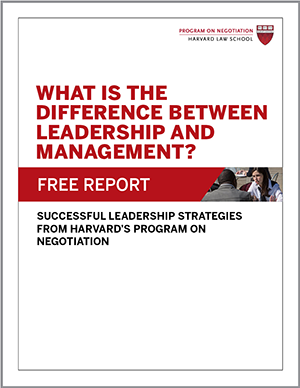
Many people overlook the fact that hiring is a type of negotiation. We negotiate with our colleagues and ourselves about making the right choices, and we negotiate with candidates over expectations. As many people have experienced, however, hiring is anything but straightforward, and we often make mistakes. We spoke to Michael Luca, Lee J. Styslinger III Associate Professor of Business Administration at Harvard Business School, regarding ways to improve hiring practices for better results. The conversation began with a question from a reader.
Q: I run a large sales organization and am hoping to improve hiring practices because we are currently struggling to reduce employee turnover. Is there a good strategy for us to get a better sense of which candidates we should be pursuing?
Is there a better way to make hiring decisions?
A: When you are deciding whom to hire, keep in mind that you are essentially making a prediction. You are predicting who will perform well in the job and who would be likely to quit. When it comes to making predictions, data and algorithms often can be great aids that complement human judgment, which can be biased in several ways.
In recent years, new data sources and advances in empirical tools, especially machine learning, have made algorithmic programs a feasible and practical way to improve hiring practices in many settings. I recently looked at this issue in the context of hiring teachers and police officers. We showed how algorithms could help identify the best candidates in both fields and even help to reduce incidents of police abuse.
Several organizations have begun to experiment with algorithms in the hiring process. It sounds like yours is ready to explore algorithmic hiring, and I advise you to do so with the following three guidelines in mind.
Three ways to improve hiring practices with algorithms
1. Because hiring algorithms are only as good as your ability to develop the right performance metrics, having clear metrics in mind is critical to effective implementation. This is easiest in contexts where you can plausibly measure the performance you care about, such as improving profits or reducing turnover. In your case, it sounds like you would want to use an algorithm to predict turnover. But a word of caution: I would be hesitant to advise you to predict only turnover.
Take stock of all the outcomes you have access to and care about, and include them in your algorithm. For example, you might also consider outcomes such as the number of calls a salesperson makes and the percentage of calls that end in a sale.
2. Hiring algorithms function better when you have more data to feed into them. You have an advantage here, since you said you run a large organization, and each employee is an additional data point. But in the context of hiring algorithms, data includes more than just the number of employees. It’s also important to have a broad set of data about each applicant and current employee. When you read a résumé, you automatically put weight on each piece of information— such as the applicant’s grade point average, degree, and school. An algorithm can augment your intuition with a systematic analysis of the available data that determines how much each of these pieces of information matter. Start by including these different data points, being aware that exploration and intuition will still be required to help you know what data to keep.
3. Once you understand what to predict and what data you have access to, it’s time for implementation. For a large organization like yours, you have multiple options, ranging from developing an algorithm in-house to outsourcing one. Smaller businesses that lack sufficient internal data or resources to create their own algorithm still have options. In the UK, for example, the nonprofit Nesta and the Behavioural Insights Team developed a platform called Applied (www.beapplied.com) to help organizations develop efficient and equitable approaches to interviewing and evaluating candidates that draw on both human and machine intelligence. Options such as this are viable for companies of all sizes. Also, it’s possible for smaller employers to experiment with more formal ways to improve hiring practices, such as using a point system to weight different elements of a résumé, which can be a step toward algorithmic hiring.
A critical step in any negotiation is to evaluate the set of alternative options—in this case, the various candidates you are thinking about hiring. Of course, a good interview process is necessary, but even then, human bias can get in the way. An algorithm, in conjunction with human intuition, can help you weigh your options more efficiently and effectively—and help reduce your turnover rates.
Have you used algorithmic practices in your hiring? How did you approach it?





